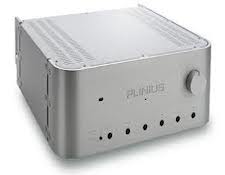It’s the time of year for saving money!
We live in a global economy. High-performance audio components are made in almost every country in the world. Even China has emerged as a purveyor top-shelf brands. But, what about New Zealand?
 I had the pleasure to interview Mr. Brian Willoughby, Managing Director of Plinius, who just happen to be located in New Zealand. Plinius makes high-end amps, preamps, digital components, phono stages and home theater products. Plinius is a subsidiary of Contex Engineers, a specialty machining and manufacturing company. Based in Christchurch, Plinius, and the parent company, Contex Engineers, manufacturers and ships product throughout the world. New Zealand is often, and mistakenly, thought of as being part of Australia. Something that is hardly true and something any Kiwi would be very quick to correct. Despite it’s size, and being about 1500 miles from Australia, New Zealand has a highly skilled, technologically advanced manufacturing effort.
I had the pleasure to interview Mr. Brian Willoughby, Managing Director of Plinius, who just happen to be located in New Zealand. Plinius makes high-end amps, preamps, digital components, phono stages and home theater products. Plinius is a subsidiary of Contex Engineers, a specialty machining and manufacturing company. Based in Christchurch, Plinius, and the parent company, Contex Engineers, manufacturers and ships product throughout the world. New Zealand is often, and mistakenly, thought of as being part of Australia. Something that is hardly true and something any Kiwi would be very quick to correct. Despite it’s size, and being about 1500 miles from Australia, New Zealand has a highly skilled, technologically advanced manufacturing effort.
Mr. Willoughby filled me in on Plinius history, “Plinius was founded in 1980 by a chap called Peter Thompson. To make things more difficult, transistors were a new technology and the quality wasn’t often very high. There were also import restrictions and that made any kind of kit that was moderately expensive, very expensive.” This led to the formation of about a dozen high-end manufacturers in a country with, “only three million people and seventy million sheep.” Toward the end of the 1980″s import restrictions were lifted and that saw the demise of quite a few of those companies. In fact, Plinius is one of two that survived, and by far the largest.
Plinius has always been a manufacturer of transistor amps and preamps. “The strength of the company” as Willoughby puts it, ” is its history. If you’re going to mess up the signal you’ll mess it up when you really amplify it.” By the early 1990’s, Plinius had a solid reputation for amps and preamps. Source components grew from that point and followed the amps and preamps. “We have young engineers working for us that can manage digital and we’ve gotten into the source. We think this is an important and exciting time to be an audiophile.”
 Plinius targets their products at a specific price point. “Right now, we recognize that for our brand to get more recognition we need an entry point that’s lower than the Hautonga that we’ve got at the moment and those two products are being released in Munich.” The Hautonga is Plinius’ current entry-level integrated amp. Willoughby understands “that even a small company like Plinius that needs more volume than it’s got now, the only way it will do that is with an attractive price point.”
Plinius targets their products at a specific price point. “Right now, we recognize that for our brand to get more recognition we need an entry point that’s lower than the Hautonga that we’ve got at the moment and those two products are being released in Munich.” The Hautonga is Plinius’ current entry-level integrated amp. Willoughby understands “that even a small company like Plinius that needs more volume than it’s got now, the only way it will do that is with an attractive price point.”
Currently the digital lineup includes the Tiki network player, the Toko digital audio and physical CD player, and the Mauri, which is a conventional CD player. Plinius’ own iPad app, the Arataki controller, is available through iTunes, and controls all of these components. Tiki and Toko digital players are both capable of 192 / 24 playback and include their own built in DAC.
]]> According to Willoughby, “Where I think it’s going to go, the server is one area of the technology that’s going to get better so the storage is going to be better used. The library management software on the storage is also going to get better. And for Plinius, our game is to have a window into that, which is our app that allows you to look at that file structure and see it in a structure that is good to read. And it’s in making sure that we take the signal, render it well, and put it into a good DAC. That’s the part where Plinius has got to concentrate.”
According to Willoughby, “Where I think it’s going to go, the server is one area of the technology that’s going to get better so the storage is going to be better used. The library management software on the storage is also going to get better. And for Plinius, our game is to have a window into that, which is our app that allows you to look at that file structure and see it in a structure that is good to read. And it’s in making sure that we take the signal, render it well, and put it into a good DAC. That’s the part where Plinius has got to concentrate.”
The flagship digital player, the Tiki, does not have its own internal storage and instead utilizes a storage medium supplied by the customer. The reasoning for this according to Willoughby, “We feel that the engineering skill base and the hardware in that space is computer technology. It is improving and the skills in doing it are a specialized set of skills.” He noted, “We think that’s the area that is going to improve the fastest and become cheaper. We think the smartest thing for us to do is not be engaged in that and let our end user customer take advantage of that technology as it gets better and faster.”
 Currently the two renderers, the Tiki and Toko both have their own internal DAC. Plinius is considering, as an option, to offer both models without a DAC so end users may choose one themselves. However there is no current timetable for that to be available. Also, currently, playback is limited to 192 / 24 so at the present DSD is not available. As Willoughby sees it “if it becomes popular enough and there is demand for DSD playback there will be a retrofit that can go in the unit.” Willoughby has decided that for the immediate future, and until the direction of which way the DSD winds will blow, it is better for Plinius to work on development of the process and introduce it when it makes sense.
Currently the two renderers, the Tiki and Toko both have their own internal DAC. Plinius is considering, as an option, to offer both models without a DAC so end users may choose one themselves. However there is no current timetable for that to be available. Also, currently, playback is limited to 192 / 24 so at the present DSD is not available. As Willoughby sees it “if it becomes popular enough and there is demand for DSD playback there will be a retrofit that can go in the unit.” Willoughby has decided that for the immediate future, and until the direction of which way the DSD winds will blow, it is better for Plinius to work on development of the process and introduce it when it makes sense.
I asked Mr. Willoughby if someone was looking to build a high-end system why they should consider Plinius. He replied, “If you’re going to be a Plinius user you’re going to have a certain profile. You’re going to value some of the nice things in life. You’re going to have an appreciation for the aesthetics. That’s going to be important. You’re going to want to be dealing with a company that’s not pretentious. As Kiwi’s, we’re not ostentatious. We’re not over the top in any of our presentation stuff. And our products reflect that. And you’ll be a person that values that. That’ll be the thing that makes you choose Plinius.”
I would like to thank Mr. Brian Willoughby for taking the time to talk with me regarding Plinius.





